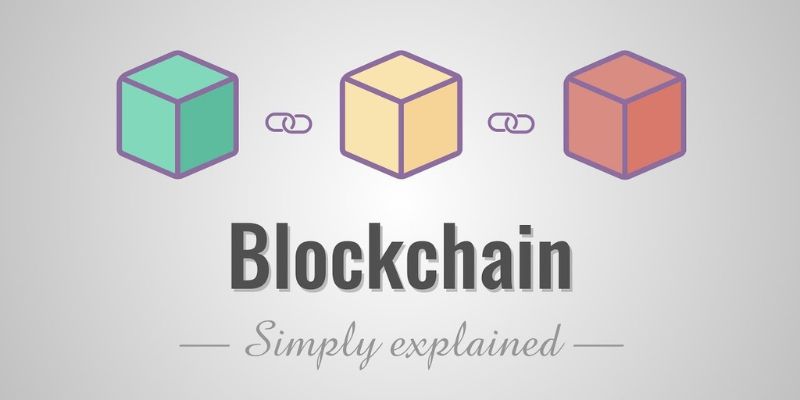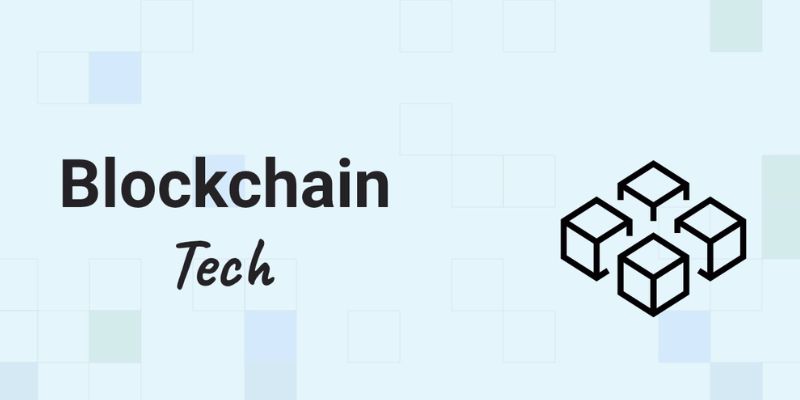Welcome to your crash course on one of the most buzzed-about topics in the tech world – Explanation of blockchain technology. Let’s shed some light on this mysterious digital ledger that is reshaping how we think about online security and transactions. Imagine a digital chain of blocks where each one holds a mini vault of data – that’s the essence we’re diving into. From secure finance moves to clear records of who owns what, this tech marvel promises a new dawn of managing info online, and you’re about to find out how. Join me on a journey from its basic concept to its complex applications in our daily lives. It’s easier than you think, and I’m here to guide you every step of the way.
Demystifying Blockchain Technology: Definitions and Operations
Understanding Blockchain Basics
What are blockchain basics? A blockchain is like a digital notebook that stores records. Imagine a book where you jot down everything you spend or receive. Now imagine this book is on many computers at once. That’s how blockchain basics work. It’s a long list of records linked and secured.
This digital notebook is shared across a bunch of computers. These are called nodes. Each node has a copy of all the records. This is called distributed ledger technology. It makes sure everyone has the same notes and follows the rules.
How Does Blockchain Work?
How does blockchain work? Let’s dive into that now. Each entry in the digital notebook is a block. Each block has a list of deals, like trades of money or info. They also have a code called a hash. Hashes are complex math problems solved by computers. They link each block to the next one, forming a chain.
When a new deal happens, it’s sent to all the computers. These systems check if the deal is legit. If it is, it’s grouped with other deals. This forms a block. The block is added to the previous one to make the chain longer. This is the blockchain data structure.
Now, for the blockchain to be safe and fair, rules are needed. These rules are called a consensus mechanism. One common type is proof of work. Computers race to solve a math problem. The winner adds the new block and gets a prize, like Bitcoin. Another type is proof of stake. Users lock-up part of their digital money as a promise. They get a chance to add the next block and earn a reward.
With this tech, no single person is in charge. It’s a group effort. This is called decentralized systems. They have no central boss. The rules and math make sure everyone stays honest.
Blockchain and cryptocurrency often link up. Cryptocurrency is digital money like Bitcoin. It needs blockchain to move and track the money safely. The tech checks every trade, making crypto hard to fake or steal.
Another neat thing done with blockchains are smart contracts. These are rules set in the digital stone of blockchain. For example, money moves only if certain things happen, like signing a house sale paper. This all runs on platforms like the Ethereum platform, built to handle these smarts deals.
Blockchain applications are huge. They can track an item from start to finish in supply chain. They help prove who you are online in digital identity. Even banks are getting in on the act with faster, safer money sending.
Blockchains protect your info with blockchain encryption. Only those meant to see your stuff can. Still, some worry about blockchain privacy concerns. If things are too open, personal info could leak out. Experts are on it, making sure blockchains stay both open and private where needed.
So that’s it – the basics of blockchain and how it works. This digital ledger is lined with rules, math, and huge promise for how we trade, share, and protect what’s ours online.
The Backbone of Blockchain: Structure and Mechanisms
Exploring Blockchain Data Structure and Encryption
Imagine a chain where each link holds a box of info locked tight. That’s blockchain! Here’s how. Think of a blockchain as a growing list. Each block holds a bunch of records. They link to previous blocks. This forms a chain that nobody can change. That’s the blockchain data structure, sturdy and safe.
Now, each block also gets a lock. We call that ‘encryption.’ Special math, called hash functions, keeps this lock safe. Thanks to encryption, blocks guard their info like gold in a vault.
In blockchain, no one owns the whole list. Instead, many people, known as nodes, share it. They all have copies of the chain and follow rules to agree on changes. This is what we mean by decentralized systems. There’s no head office, just a network of equals keeping track straight.
And blocks need permission to join the party. With a nod from the group, a new block adds on. Such tight security earns blockchain trust in areas like banks and healthcare.
Dissecting Blockchain Consensus Mechanisms
Here’s a riddle: How do blocks get approval to join the group? That’s done through consensus mechanisms.
There are a couple of big ones. Proof of Work, for example, makes computers solve a tough puzzle to add a block. It keeps the list secure but needs a lot of power. So, people came up with another way, Proof of Stake. Here, folks can join a block-making group if they hold a stake in the currency. It’s like owning stock in a company. Those with more at stake get a bigger say.
In the tech world, these methods are pretty big. They make sure everyone on the network nods along. Everyone must say “yes” for a change to stick. If not, the block doesn’t fit. It gets the boot.
Ethereum, a playground for developers, runs on such systems. It’s where smart contracts live. These are deals that automatically do stuff when conditions line up. Like a vending machine for digital stuff, toss in the right coins, get your prize—no humans needed.
But what keeps all this from falling apart? The secret’s in the blocks. Once something goes into a block, it stays put. We say the chain is ‘immutable.’ That’s a fancy way of promising that once you write something, it sticks like glue. No erasers allowed.
Those chains of blocks tally our e-cash, keep tabs on medicine, and more. They’re even cracking the code on keeping our votes safe and sound. It’s all about trust in the tech.
Blockchain’s not just for techies, though. With each passing day, folks everywhere find new uses. From art sales with NFTs to farmers tracking their veggies, it’s a whole new world built on this rock-solid chain. And it all starts with locking that data down tight in each link.
Blockchain Varieties and Their Unique Functions
Differentiating Public vs Private Blockchain
Have you heard the words “public” and “private” blockchain? They are like two different playgrounds. In a public blockchain, anyone can join and play. It means everyone can see what’s going on. Think of it as a big, open park. Bitcoin is an example. It lets everyone send and check transactions.
A private blockchain is like your backyard. You pick who comes in. Only people you invite can join and see what’s happening. This helps keep things secret and safe. Big companies use private blockchains to keep their data safe.
Now, don’t get mixed up. Both public and private blockchains are safe. Both use something called encryption. It’s like secret codes that keep data safe.
The Role of Blockchain Nodes and Smart Contracts
Let’s talk about “nodes”. Think of them as mini-librarians. They hold copies of all blockchain books. This means if one librarian leaves, we still have the other copies. It keeps our blockchain park clean and tidy. Nodes also check new data, like when kids want to add a new toy to the park.
Now, smart contracts are super cool robots in our park. They make sure deals go smooth. Let’s say you want to trade cards with a friend. The robot checks if you both have what you agreed to trade. Only then does the trade happen. No cheating!
Ethereum is one big place where these robots work. It’s like a giant virtual playground where these robots help people make deals and trade. These smart contracts can be used in all sorts of ways. Like in supply chains to track your new toy from the factory to the store, or in banks and hospitals to keep your info safe.
So, that’s how blockchain helps keep our virtual playground safe and fair!
Remember, blockchain can be a tricky toy to understand. But think of it as a safe place to play and trade, with secret codes and helpful robots. And just like any playground, rules help make sure everyone has a good time. That’s why blockchain is so amazing. It can help us do so many things in a safe and smart way!
Blockchain in Action: Applications and Implications
Advancements of Blockchain across Industries
Ever wonder how blockchain sticks around in so many fields? It’s like a Swiss Army knife for data. In business, count on blockchain for keeping purchases clear and safe. Think of it as a shared notebook that everyone can see but no one can rip a page out of. Businesses use this to track what’s bought and sold, avoiding sneaky changes. Blockchain’s not just for Bitcoin. It’s popping up in shipping goods, signing deals, and keeping patient records safe in hospitals.
Suppose you buy a fish from the store. Blockchain helps prove no funny business happened from the boat to your bag. Each step, from catching to selling, gets a data block in the blockchain. This trail keeps things honest. It’s not just stores, even people selling homes or artists making digital art use blockchain. They make sure they get paid right, and buyers know they’re getting the real deal.
The Future of Blockchain: Interoperability and Scalability Challenges
So, what’s next for blockchain? We’re talking about making blockchains work together better, like game systems being able to play each other’s games. And, we’re trying to make them handle more action without slowing down or costing a ton. Big words like ‘interoperability’ and ‘scalability’ are really about talking and growing.
Right now, many blockchains are like islands – they work great alone but don’t talk to others well. If blockchains shake hands and share, things we do online like banking or playing games could get even easier. Imagine sending money without worrying about what bank or country you’re in. Scalability – that’s wanting blockchain to work fast even when lots of people start using it. Like a video game that lets more players join without glitches.
Some smart folks think we can use something other than ‘proof of work’ to agree on new blocks. That’s the tough math that keeps Bitcoin safe but uses lots of power. They suggest ‘proof of stake’ where owning part of the blockchain lets you help without all the math. This could make blockchain faster and easier on the planet.
We’re also seeing new things like smart contracts, making agreements that self-execute when rules are met, no need for middlemen. Plus, blockchains might soon manage our identities, keeping our info safe without needing a stack of IDs.
Blockchain is a big deal, way beyond just sending money. It’s changing how we do all kinds of things, and there’s still a lot to come! We’ll keep watching as it grows, making sure it stays fast and easy for everyone.
In this post, we dove into blockchain basics, unraveling its complex parts. We explored how blocks hold data and the role of encryption in keeping it safe. We also cut through the tech talk to explain how all parts agree on what’s true or false in the blockchain world.
Then, we eyed the different blockchain types and how each shines in its way. We peeked at public and private ones and unpacked the cool job of nodes and smart contracts in this digital ledger dance.
Lastly, we saw blockchain stretch its arms across various fields, shaping today’s tech landscape. Yet, as it grows, it bumps into some tough spots like working well with other systems and handling more load.
In closing, understanding blockchain’s a big deal—it’s not just for tech whizzes. It’s about seeing where tech is going and how we might all be part of this digital revolution. Keep your eyes peeled; blockchain’s just getting started, and we’re all along for the ride.
Q&A :
What Is Blockchain Technology and How Does It Work?
Blockchain technology is a system of recording information in a way that makes it difficult or impossible to change, hack, or cheat the system. A blockchain is essentially a digital ledger of transactions that is duplicated and distributed across the entire network of computer systems on the blockchain. Each block in the chain contains a number of transactions, and every time a new transaction occurs on the blockchain, a record of that transaction is added to every participant’s ledger. This decentralized database managed by multiple participants is known as Distributed Ledger Technology (DLT).
Why Is Blockchain Considered Secure?
Blockchain is considered secure due to its decentralized nature and cryptographic algorithms. Each transaction is encrypted and linked to the previous transaction, which together with the network’s consensus algorithm, ensures that each transaction is verified by multiple nodes in the network. If a hacker were to alter any block, they would have to alter all subsequent blocks in the chain across all distributed versions of the chain, which is nearly impossible due to the amount of computational power required. Furthermore, blockchains are typically open to the public and easily auditable by anyone.
What Are the Key Features and Benefits of Blockchain Technology?
The key features of blockchain technology include decentralization, transparency, immutability, and security. These contribute to its benefits such as reduced transaction costs as intermediaries are removed, increased speed and efficiency in transaction processing, and enhanced security against fraud and cyber threats. Additionally, because the transaction history is immutable and accessible to anyone on the network, there is a significant increase in transparency, which can be beneficial in various industries, including finance and supply chain management.
Can Blockchain Be Used Beyond Cryptocurrencies?
Yes, blockchain can and is being used beyond cryptocurrencies. While it is the underlying technology for digital currencies like Bitcoin, it has potential applications in many other fields. For instance, blockchain can revolutionize supply chain management by providing real-time, transparent tracking of goods and materials. It can also be utilized in voting systems to prevent fraud, in healthcare to manage patient records securely, and in digital identity verification processes. The versatility of blockchain technology is one of its most appealing characteristics.
How Can I Trust a Blockchain Transaction?
A blockchain transaction is trustworthy because it must be verified by consensus of all the participants in the network. Once a transaction has been recorded in a block and added to the blockchain, it cannot be altered without consensus. Additionally, all transactions are encrypted and linked to the previous block, which provides another layer of security. Trust in blockchain transactions also comes from the network’s transparency; each transaction is visible to all participants, making it highly resistant to fraudulent activity.




RELATED POSTS
Blockchain Showdown: Layer 1 vs Layer 2 Unraveled
Enhance transaction throughput with blockchain...
Barriers to Blockchain Adoption: What’s Holding Back the Revolution?
Navigating Blockchain's Economic, Legal, and...
How Security Bolsters Blockchain Adoption: Navigating the Tech Maze
How does security impact blockchain...
Cryptocurrency Unveiled: Unlocking the Mysteries Beyond Blockchain
How is cryptocurrency different from...
What is a 51% attack? How a Blockchain Takeover Threatens Your Crypto
What is a 51% attack?...
What are distributed systems? Bridging the Gap Between Efficiency and Complexity
In today’s digital age, the...
Blockchain Revolution: Examples Of Blockchain In Healthcare
"Examples of blockchain in healthcare:...
Predictions about the Future of Blockchain Security: Revolutionary Safeguards Ahead
Predictions about the future of...
Green Cryptocurrency: Is Eco-Friendly Trading the Future?
Discover the importance of green...
Primary versus secondary market – Understanding Clearly for Effective Investment
Primary versus secondary market are...
What is polygon crypto – The Layer 2 Solution for Ethereum
What is polygon crypto? It...
Interledger Protocol Unveiled: The Future of Seamless Payments?
What is Interledger Protocol? Unraveling...
Distributed Ledger Technology vs Blockchain – A Comparative Analysis
Have you ever wondered about...
Kishu Inu Coin: A guide to investing in this Meme Token
Discover Kishu Inu Coin, a...
Towns Airdrop – Expert Experience in Mining
To optimize benefits from the...
Security of Smart Contracts: Ensuring Your Digital Dealings Are Ironclad!
Discover the crucial role of...